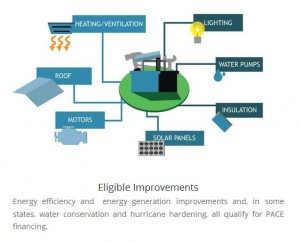“Customers are figuring out that they can buy fewer electrons, use them more productively, and produce more of their own, and it’s a good idea to sell customers what they want before someone else does.” Armory Lovins, Rocky Mountain Institute
A client recently told our CEO “we have lots of people trying to sell us products; we’re looking for someone who can help us with solutions!”
It seems to be a recurring theme that the best product for energy efficiency is simply installing the latest LED lighting. While lighting makes up a significant use of energy, true energy efficiency is far more complex than simply replacing outdated lighting technology.
If you want to see what true energy efficiency looks like I would encourage you to read the interview of Armory Lovins by Justin Gerdes. Lovins is the founder of the Rocky Mountain Institute and considered the world’s foremost authority on energy efficiency.
“The more you save, the cheaper it gets.”
One of the energy efficiency concepts Lovins promotes is what he calls “integrative design”. It involves incorporating a whole system approach for achieving energy efficiency by pursuing multiple benefits instead of only isolated systems or single benefits. He describes it as allowing for expanding, instead of diminishing, returns. It was a design technique he incorporated in the recent energy efficiency upgrade of the Empire State Building and aligns with his philosophy of “The more you save, the cheaper it gets.”
Our VP Curt Monhart understands “the more you save” concept and created a proprietary algorithm for the Property Assessed Clean Energy or “PACE” projects EAG develops (see video). When utilizing PACE financing on a project Monhart’s algorithm becomes a vital component of a successful holistic renovation. Simply addressing a single system prior to a renovation will often result in a project not qualifying for PACE funding.
 One of the requirements of Property Assessed Clean Energy is that the savings must pay for the complete energy efficiency upgrade by using the money saved in relation to a prior baseline value of energy payments. As you can see from the graphic, the difference in the energy usage must fund the total renovation. Otherwise it will not qualify as a PACE project.
One of the requirements of Property Assessed Clean Energy is that the savings must pay for the complete energy efficiency upgrade by using the money saved in relation to a prior baseline value of energy payments. As you can see from the graphic, the difference in the energy usage must fund the total renovation. Otherwise it will not qualify as a PACE project.
—
“The market has shifted irrevocably to favor those who provide efficiency, renewables, distribute resources, and customer services.” Armory B. Lovins
 One of our affiliate partners manufactures and sells lighting products. They took Monhart’s algorithm and instructed their sales force to apply it any time they did a walk through of a client’s facility. The company’s leadership realized they could achieve far greater success selling their product as part of a well-funded, all encompassing renovation, instead of a purchase order that stressed the client’s cash flow. It allowed them to become an all inclusive energy solution to their clients instead of joining the masses that are simply selling products.
One of our affiliate partners manufactures and sells lighting products. They took Monhart’s algorithm and instructed their sales force to apply it any time they did a walk through of a client’s facility. The company’s leadership realized they could achieve far greater success selling their product as part of a well-funded, all encompassing renovation, instead of a purchase order that stressed the client’s cash flow. It allowed them to become an all inclusive energy solution to their clients instead of joining the masses that are simply selling products.
—-
“It allowed them to become an all inclusive energy solution to their clients instead of joining the masses that are simply selling products.”
To paraphrase Lovins’ lead quote, owners of commercial property understand they can buy less electricity and they can more productively use the energy they do purchase. It’s important for an energy efficiency renovation to take into consideration that new found understanding and then offer solutions that align with that thought process. If Lovins is right in his conclusions, providing energy efficiency solutions (including maintenance, financing options, rebates, incentives, training, etc) will become more important than simply selling products!
If you would like to learn how PACE helps launch energy efficiency projects, here’s a LINK to a brief video or, if you’re in the area, consider attending the upcoming seminar entitled Keeping PACE with Energy Efficiency in Michigan.
Leave a Reply